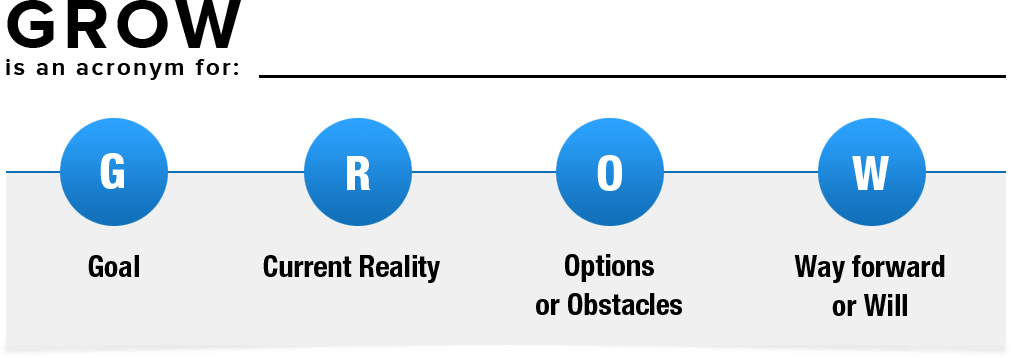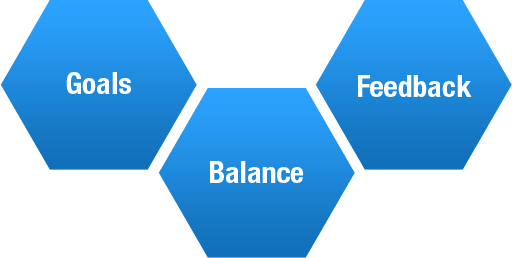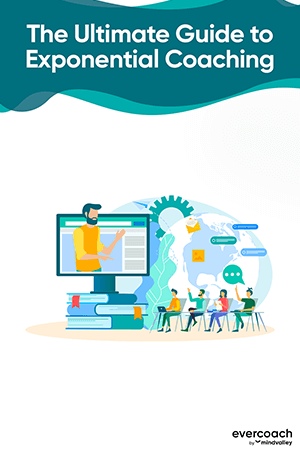CHAPTER 2
Think Like a
High-Performance Coach
So, what does it mean to think like a high-performance coach?
The best high-performance coaching strategies in the world mean nothing when your thoughts and attitudes are out of whack.
If you're wondering how to become a performance coach - and moreover, a high-performance coach - you must know that it all begins with the mind.
I've personally worked with, coached, and learned from top high-performance coaches and there are a handful of key common mindset traits that set them apart from all other coaches.
For one thing, they don't see themselves as world-class even though they are.
The world's best high impact coaches don't say to themselves, "I've hit my goals, I'm better than anyone else in my area of expertise or niche. I can sit back and relax now."

REMEMBER THIS:
The best in the business are always looking for ways to up their game.
They see themselves as lifelong learners and they are willing to learn from anyone who can teach them to become better coaches and better human beings.
This attitude keeps them growing, changing, and leveling up their coaching skills, long after other professional coaches hand themselves the "good enough" card so they can stay on the bench.
All coaches are invested in seeing their clients succeed, but high-performance coaches take this to a whole new level.
Their belief in their clients is literally unmatched.
Their clients know with absolute certainty that their coach believes in their ability to succeed and far surpass their goals.
A high-performance coach who excels at what they do can hold this belief even when things go wrong for the client. This inspires and influences the client to see themselves through their coach's eyes and that's the place where the magic happens.
Then, there's the most important mindset trait of all...

Top high-performance coaches - the ones who consistently create out-of-this-world results - are fearless about being disliked by their clients.
They have the courage to tell their high-achieving "A list" clients what they need to hear and not just what they want to hear.
This is probably one of the most important high-performance coaching strategies a coach can use.
The best coaches are unafraid to tell things as they are, even if it might mean that the client won't like it.
Because of their incredible achievements, most high achievers regularly receive praise and validation from friends, bosses, or peers who see them as they are - ultra successful go-getters.
But a high-performance coach sees their clients not just as they are, but as they could be. They hold a massive vision for their clients. They help them dream bigger than ever before because they know they can get there.
And they are unafraid to focus on the areas where their clients are not performing as well as they could be. They are unafraid to open up any uncomfortable conversations that may be hard to navigate, but will ultimately bring the growth their clients need to reach their next level.
This often creates inner resistance in clients and even anger toward the coach - especially for high achievers who are accustomed to receiving only praise and validation - but the best coaches can handle the heat without breaking a sweat.
They know that highlighting and then working through their client's "weak spots" is a crucial part of their development.
Their love for their clients always exceeds any hidden need to be liked at all times.
And you know what? It works.

Answer the following questions in your journal or in an audio recording:
1) What are some your strongest traits as a coach?
2) What are your weakest traits?
3) What are mindset traits listed in this chapter that you need to work on?
Come up with 1 action step you can take this week to improve your personal mindset as you learn how to become a successful a high performance coach.
CHAPTER 3
High-Performance
Coaching Model
It's an honor to support big dreamers and go-getters as they bring their world-changing visions to life.
It's deeply satisfying to watch them hit their goals out of the park.
These are some of the reasons coaches dream of working with high performers.
But so many never end up making this dream a reality because they are unclear about the action steps and strategies they can use to work with high achieving clients.
In this chapter, we're exploring an overview of 3 key coaching models that will help you build your skills as a high-performance coach.
You can choose to use each one separately or mix and match techniques from each model to create a custom method that suits individual clients.
The GROW Model
Developed back in the '80s by business coaches Graham Alexander, Alan Fine, and Sir John Whitmore, the GROW model is extensively used in the coaching industry.
It's an easy and effective 4-step structure many coaches use to guide their coaching sessions with their clients.

High-performance coaches who use the GROW model will first work with their client to identify their Goal. This means having a clear vision of where they want to go, what they want to achieve, and/or who they want to become. This is potentially the most important step because it will define the rest of the session or even coaching relationship, especially for high performing clients who want to dream bigger than ever before. Many coaches even invest their first 1-2 coaching sessions focused solely on defining the goal itself and why it's important for the client, before heading onto the next parts.
After the goal is clear and defined, it's on to looking deeply into the client's current Reality to establish their starting point - where they are now and what is happening for them. This step will help uncover information or insights the client may have missed... such as resources they may need or people in their immediate surroundings or network who can help them achieve their goals. Put your deep listening skills into action for this section. Dive deep, be curious, ask questions.... really understand what is happening for the client - their challenges, roadblocks, fears, dreams, emotions, etc.
Next, it's about exploring Options or working through Obstacles. The client and coach work together to create a clear picture of the options or paths they can choose to get to their goals and also identify obstacles and challenges that are in the way. The objective of this step is to brainstorm as many options as possible to overcome the challenges and/or achieve their goals, and then help the client prioritize and start taking action.
Finally, Way Forward or Will is about highlighting clear action steps the client can take to immediately start moving toward their goals. Usually, in this step, the client chooses one or two actions to get done before the next coaching session.
This creates momentum and motivation.
The GROW method is perfect for high performers who enjoy working with tangible strategies and plans rather than with intangible conceptual methods.
The Flow Model
The concept of flow was introduced to the world by positive psychologist Mihaly Csikszentmihalyi, in his book Flow: The Psychology of Optimal Experience.
Flow has been described as a mental and emotional state where an individual is performing at an optimal level.
They experience energized focus, and full engagement and enjoyment in the task or activity there are working on.
Flow states can create incredible levels of sustained creativity and productivity and high performers are constantly looking to improve in both these areas.
The Flow Method focuses on:

Goals, in the context of the Flow Method in high-performance coaching, are about identifying and setting effective goals that will consistently motivate and inspire the high performer.
The next area of focus is balance...
Specifically balance between challenge and skill. High performers constantly struggle with this one. They're either challenging themselves to the point where they feel overwhelmed or they end up bored because they're not challenged enough.
The high-performance coach needs to help their client find that fine line between perceived skill and challenge so the client feels excited yet confident that they can get where they want to go.
Feedback is a key aspect of the Flow Method.
Few high performers can expect helpful, supportive feedback from their environment. They're usually surrounded by people who are unskilled at giving useful feedback or they're so far ahead of everyone else that no one is able to have enough of a clear perspective to offer helpful insights and advice.
The coach's job is to give effective, clear feedback to help the client rapidly progress toward their goals.
The Exponential Coaching Model
Created by one of the world's most successful high-performance coaches, Rich Litvin, Exponential Coaching is specifically designed for high achievers, leaders and top performing entrepreneurs.
This model involves 5 key elements that are needle-movers when it comes to creating extraordinary transformations in record time:

Element#1
Deep Listening
Focused on the mindful act of being present, deep listening allows the coach to quickly and accurately tap into the client's inner world - including thoughts and feelings - even if the client is unable to communicate well with the coach. Also referred to as active listening, it's about giving 100% of your focus and attention to what your client is saying - and what they're not. Listening beyond the words and reading body language are also two core coaching skills you want to master as an exponential coach.

Element #2:
Eliciting
This is about gently uncovering the client's goals and dreams including those they didn't even know they had. A great high-performance coach does this by asking clarifying questions and watching for spoken and unspoken cues including body language and tone of voice.
Watch how a masterful high-performance coach applies Eliciting techniques (and how you can replicate them with your clients) in this powerful live coaching session delivered by Rich Litvin at the Evercoach Summit 2016.

Element #3:
10X
10X means exponential impact. How can you help your client 10X their impact? 10X involves motivating a high-achieving client to dream and go bigger than they ever have before. The coach uses powerful, motivational methods of speaking, coaching, and guiding a client so they are excited and inspired to reach for more, even if it might feel unattainable.
This is about getting clients to jump past incremental progress and start create massive results and go for the impossible - at least 10 times more than they think they can achieve!

Element #4:
Leadership
In the context of the Exponential Coaching model, leadership is about leading the client from a place of deep love and connection. This is about vulnerability and transparency.
The coach shares stories and experiences - even from their own life - to help clients in an authentic way. They are focused on showing their clients what they can do for them. They support and believe in their clients even when these don't believe in themselves.

Element #5:
Strategy
This final element is about more than tasks, techniques or tactics.
High-performance coaches need to help their clients create an internal environment that allows them to rise higher and faster. What structures need to be in place to support the client's journey to achieve their goals?
This includes showing them how to take care of themselves so they get to experience joy and satisfaction, not just after they hit their goals but every step of the way.
Special Note: If you'd like to know more about the Exponential Coaching Model, head over to Chapter 5 at the end of this guide.

The following questions will help you think deeply about each of these 3 high-performance coaching models introduced in this chapter.
Get your journal or a recording device and capture your answers:
- Which of the coaching models listed in this chapter appealed to you? Why?
- Which ones have you tried already? Did you feel comfortable following them? What would you change to fit your coaching style and methodology better?
- How can you start implementing these models into your coaching sessions with clients?
- How can you connect some of the techniques in different coaching models to create your own custom coaching methodology?


